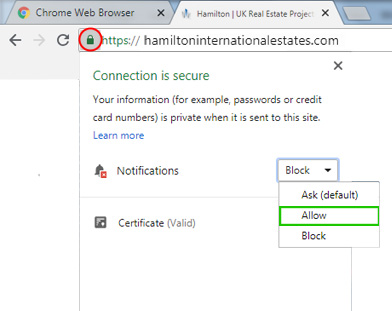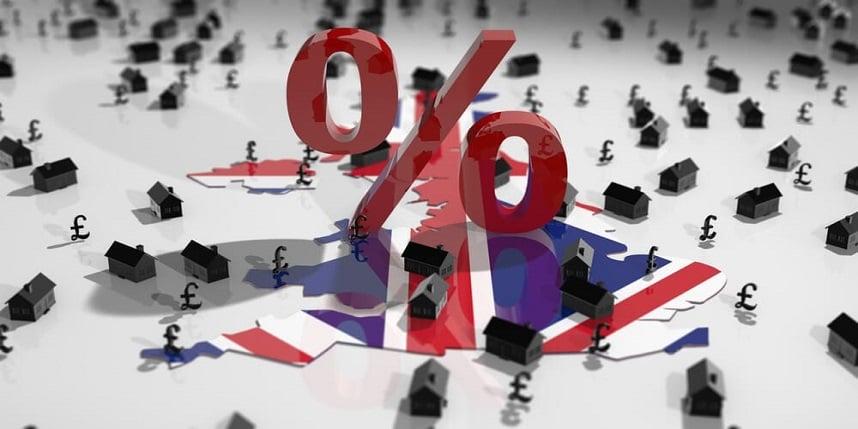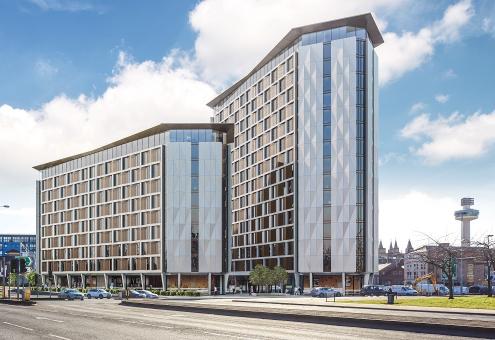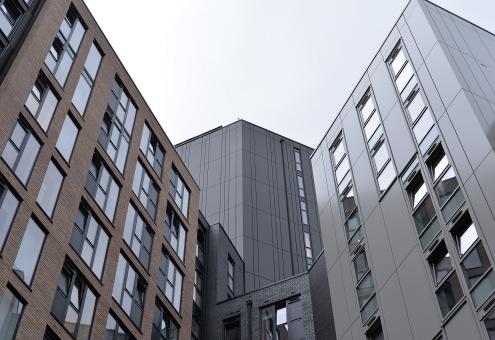Can I claim tax relief on mortgage interest UK?
09 Nov 2020
The maximum you can borrow for a buy to let is linked to the amount of rental income you may get, and lenders usually need the rental income to be 25–30% higher than your mortgage payment. In the last few years, the changes in buy-to-let tax relief reduced the gains from such investments, and lenders are preparing to allow borrowers to use their incomes to meet rental income shortfalls.
So, in general, the gains are possibly less than in previous years. In the new system, implemented in April 2020, tax relief was 20 per cent for all. Those paying the basic rate did not see any change, but those with higher income are paying more as earlier landlords could get tax relief on the mortgage interest rate payments at the marginal rate.
Nevertheless, now the basic taxpayers are getting 20 per cent tax relief, and those who received 40 to 45 per cent relief earlier can claim 20 per cent.
As per the new changes, if someone got a £150K buy-to-let mortgage on a property worth £200K, the monthly rent could be £800, and the net profit was approx. £2K per annum. But in the new system, the profits reduced to half - £960 a year.
There are certainly other ways to get tax exemption on interest for a mortgage. For example, the landlord could switch to shorter-term fixed mortgage interest rate deals to lower mortgage interest, although such mortgages carry higher risks.
They could place the property portfolio in a limited company structure and then pay corporation tax (that is lower) rather than income tax on the profits. However, one of the disadvantages of changing the property portfolio is that mortgage options will be limited, as fewer providers will lend to a company.
Although the tax changes mainly involve mortgage payment, the legislation also instructs regarding 'finance interest' or mortgage rates that include overdrafts, credit cards and fees charged by mortgage brokers.
The measure alters how property business profits are estimated, while it could bring a greater number of basic rate taxpayers into the higher rate tax net.
What is Tax Relief?
Changes in the 2015 Budget made it less than straightforward that landlord interest tax relief would be changed. It has always been an important way for a landlord to reduce taxable income, but from 6 April 2017, the rules changed for UK-based and non-resident landlords.
The tax relief that residential landlords could previously claim on their mortgage interest payments gradually increased over four tax years. By 2020, one could not claim any finance payments as tax relief.
The tax relief changes affect you if you let residential property, and you are :
-
In a partnership, individual or a trust, or
-
A UK resident landlord, or
-
A non-UK resident landlord, or
-
You are a trustee, or trust beneficiary, of a trust that must pay income tax on the profits from property.
The rules do not apply to incorporated companies, owners of furnished holiday lets or commercial properties.
The new restriction on tax relief is classed as 'finance costs.'
The changes apply to interest payments on overdrafts, loans and mortgages. It will also have an impact on some other costs:
-
Disguised interest
-
Discounts
-
Premiums
-
Mortgage and loan fees or other incidentals
-
Alternative finance returns
Some property owners get one loan to cover the purchase of residential and commercial properties. You must calculate what proportion of the interest applies to your residential properties if this is you. The new rules do not restrict funding to your commercial properties. You have to apply the same solution if you take a loan to purchase a residential property and self-employed trade.
The full roll-out of the tax relief restriction was accomplished by 2020. After that, the mortgage expenses that one could deduct decreased in inverse proportion to the percentage of the mortgage costs that one was eligible for in the new 20% tax credit.
Buy-To-Let Mortgages Interest Tax Relief Explained
From April 2017, landlords witnessed the money they could write off for tax purposes decrease by 25% YOY until April 2021. And while the UK Government claimed around 82% of landlords wouldn't be affected, most studies found over 40% of landlords claim they had to pay the additional tax due to the changes in the rules around landlord tax relief.
Earlier landlords could deduct finance costs, like mortgage interest, from their earnings to reduce the income tax they needed to pay.
However, on 6 April 2017, the government modified the income tax relief for residential landlords where a basic tax reduction of 20% on whichever of the following is the smallest was applied:
-
Finance costs (total interest on Buy-to-let mortgages, loans or overdraft)
-
Property profits / net rental income.
-
Adjusted total income(earnings after deducting losses, tax relief and personal allowance)
As a result, the calculation for buy-to-let mortgage interest changed. Now the tax relief is given as a reduction in tax liability instead of a reduction in taxable income, meaning landlords will have to declare all of their rental income, pay tax on the full amount, and then file a claim to get back 20% of this as credit, or 45% for those who receive the higher rates.
The government hopes that these changes to landlord tax relief will help prevent the highest-earning landlords from receiving the biggest income tax relief. Yet, they won't affect registered companies or landlords of furnished holiday homes.
What Are Buy to Let Tax Changes?
The changes will cause a reduction in relief for taxpayers rates for those who were getting 40% tax relief on their loan interest expenditure in 2016/17. Now they will receive just the basic 20% tax relief against profits, and they will be charged tax at the higher rates over 40%. Those earning more than 40% through rentals would have to pay more.
Many landlords have complained that their tax liability increased YOY due to the new changes. Nevertheless, the full impact of the change in rules will be seen in the coming years as it will make renting a property a potentially less profitable business for a higher rate taxpayer, with the tax due on the rental income over the profit before tax.
The inability to deduct loan interest from rental income increases the landlord's net income, which causes a reduction, or complete loss, of their allowance.
Further, for those landlords in households currently receiving child benefits, an increase in their net income due to these changes may rise to a high-income child benefit charge where their adjusted net income creeps above £50K.
Mortgage interest tax relief calculator
Landlords may consider their options concerning property structure. There are many different ways to lower the impact of the loan relief restrictions. For instance, transferring the interest into a basic rate taxpaying spouse may enable full mortgage interest relief. In addition, the changes to the rules involving loan interest relief currently do not apply regarding loans on property qualifying as furnished holiday let-in (FHL) or a rental property owned by a company.
Several property tax rules apply to mortgage deduction, and other considerations are required to evaluate the best option for each landlord client. So, one can contact an expert or use a mortgage payments deductions tax calculator to know how much the next tax bill could be.
Mortgage Tax Relief for Homeowners
The mortgage interest relief measure specifically aims to get HMO landlords where the mortgage tax relief changes have been made to stop wealthy landlords from unfairly benefiting from the most generous tax treatment.
The changes were announced earlier to give landlords some time to review their business finances, but they did not come into effect until 6 April 2017, and then, they were phased in over four years.
The government claims that the landlords paying at the basic rate should see no change in their tax amount. However, others will pay an extra £1.3bn by April 2021. Treasury estimates the measure will affect - one in five landlords, while it may lower gains on purchasing a property.
Residential Tax Rebates
For some residential landlords, incorporating their business may well be the best option with this reduction in tax relief. But it is not a blanket answer for everybody and should not be rushed into without careful consideration of the entire financial position. The process is complex, and there are many additional elements. One should get professional advice to determine how to get discounts on residential tax bills.
Can I Claim Tax Relief on Mortgage Interest UK?
If the partner or spouse pays a lower tax rate, one could transfer ownership of some of their properties to them.
Due to new changes, many landlords will already see their tax liability increase YOY. Yet, the full impact of the changes will be visible in the coming years on the residential property markets and how lenders determine the mortgage interest rates.
These changes make renting a property a potentially unsustainable experience for a higher rate taxpayer, with the tax due on the rental income exceeding the profit before tax.
Holiday lets or companies renting out homes and business property are unaffected by the new changes.
Mortgage Interest Tax Relief HMRC
Previously, landlords could claim tax back on rental income. However, since April 2020, it is no longer possible to deduct tax from rental income. However, one can now qualify for Landlord Mortgage Interest Tax Relief.
HMRC is responsible for tax collection for looking after the administrative regulations and payments that include state support.
Suppose one has a property other than the main residence. In that case, they may not be getting the amount of tax relief they were getting earlier on mortgage interest because HMRC allows interests on a loan taken for business purposes only, which could be deducted when you calculate the profits on that business. So there are limitations on mortgage interest relief.
So, in the 2019-20 tax year, landlords could deduct 25% of their mortgage interest under the old system, and 75% qualified for the 20% tax credit under the new system (down from 50% for the 2018-19 tax year). And, from April 2020, landlords could no longer deduct any mortgage expenses from property rental to reduce their tax bills.
The inability to cut loan interest directly from rental income increases the landlord's net income. However, it brings them into a higher band, which can cause a reduction, or complete loss, of their allowance.
Tax Relief on Mortgage Interest on Rented Property
Mortgage interest tax relief is no longer deductible from rental income to reduce taxable income. Since 20% of the interest on your loan applies now, the tax credit has been extended. While there are chances, you will have to pay much more in taxes due to the rule change.
What can Landlords Claim Tax Relief on?
The latest individual income tax rates and bands (as for 2021-22)are - Your allowance is the amount you can get before paying the income tax. It is £12,570, and it will remain at the same level for five years.
For the 2021-22 tax year, landlords will have to pay 20 per cent tax on BTL income (between £12,571 and £50,270).
The higher rate threshold for rental income was £50,271 when you pay 40 per cent tax on your gains.
The additional (45 per cent) was at £150,000. You can use a BTL calculator available online to learn more about buy-to-let mortgages or mortgage interest payments.
How Is UK Mortgage Interest Relief Changing?
After several changes in rules in recent years, the Autumn Budget announced that landlords would get 60 days to report and pay capital gains tax when they sell a property. In addition, the mortgage tax relief was reduced by 25 per cent each year to zero in 2020-21.
The reporting period rose from 30 days, and there were speculations that the government would increase capital gains tax rates after the Office for Tax Simplification report. But it has been left unchanged for now.
Why Is Mortgage Interest Not Tax-Deductible?
For the 2021-22 tax year, the landlords will not deduct the mortgage expenses from rental income but may get a 20 per cent tax credit on interest payments.
As per the new tax changes, there are updates to rules that landlords should be aware of for 2022 payments. As part of the government's rules, rental reforms have been proposed that mention the end of Section 21 evictions, greater fines and bans for rogue landlords, a national landlord register and a minimum standard for all rental properties.
There are plans to increase the minimum energy efficiency standard and extend the rules on carbon monoxide detectors in rental properties.
Conclusion:-
HMRC introduced restrictions on mortgage interest tax relief available for property owners. But, as if the buy to let tax wasn't adequate, the rules can change fairly, so you must have a way to make sure you pay as per the new rules. The year marks the fifth anniversary of the controversial tax changes where BTL mortgage tax relief was lowered by 25 per cent per year until it reached zero in 2020-21.
However, it means landlords who buy properties in 2022 will pay normal stamp duty land tax rates, plus the surcharge (3%) for second homes and BTLs. To help mitigate the limitations, many landlords have set up a limited company when buying a new rental property. In addition, you'll be subject to corporation tax rates of 19 per cent rather than the higher individual income tax rates.
Categorised in: All News












